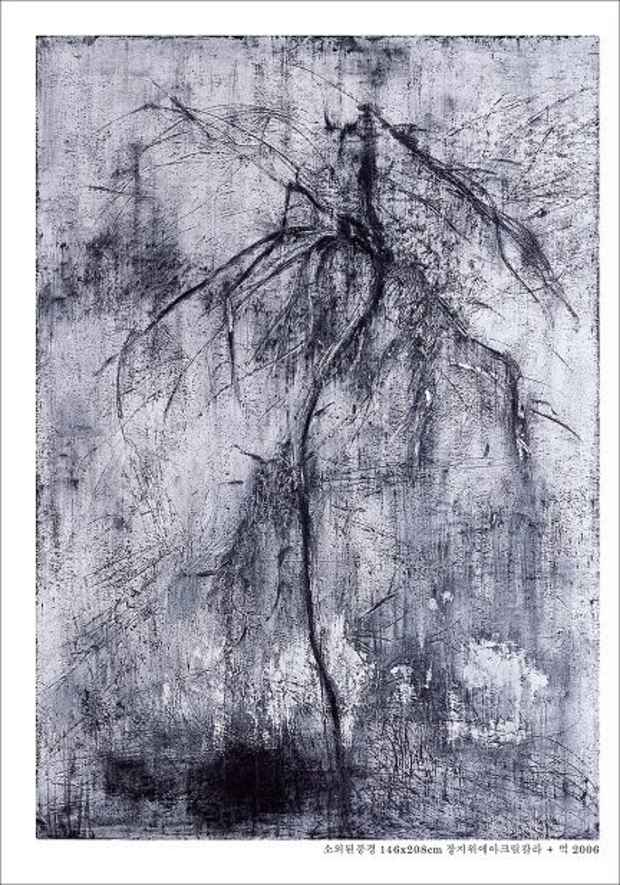Inbu Pyo "Estranged Vistas"
Tenri Cultural Institute

This event has ended.
TENRI CULTURAL INSTITUTE presents Inbu Pyo: Estranged Vistas.
Upon viewing Pyo’s landscapes the viewer can’t help but associate them with Chinese late Sung and Yuan Period wen-ren scholar-recluse paintings. Pyo’s landscapes and motifs are both simplified to their most essential characteristics appearing almost totally abstract, and appear sparse yet rarefied in their starkness. Because Pyo uses white paint on paper that’s been fixed on canvas scratching in his motifs, we can link his methods to Eastern and Western techniques and materials and to both ancient and modern periods. In crossing these boundaries Pyo demonstrates that he can be avant-garde yet still respect the past and history. Starting with the most recent is the association of paint on canvas attributed to the West, while paper and the method of scratching onto the surface of the works is related to the East. This sort of combining old and new, is analogous to the renewal of time-honored art methodologies. It can also be said that Pyo is using ancient Eastern art as a springboard to an originary landscape. This was the way by which Chinese artists in ancient times learned from the historic art of their own masters to proceed creating their own artistic vocabulary.
Pyo’s leitmotifs can be discussed in terms of the Buddhist animism of Tsung Ping who believed in the sympathetic relationship between the lei and kan-lei. Whereas lei simply put, would mean verisimilitude, the kan-lei refers to a type, another words to the essence. Pyo renders the kan-lei as essentialized landscape motifs that he expresses in the most economic scratched line, while the background is signified by the vast white expanse. By juxtaposing the scratched line upon the sparing expansive background he expresses both cold detachment and the emotion of gesture.
Pyo studied the masters as a springing board off to his own style, a notion analogous to Ni Yu’s i-p’in or uniqueness/spontaneity which nonetheless is associated with the Yuan master Ni Zan and with the Sung painter Mi Fu also known for sparse landscapes. Pyo’s style uses abbreviated, gestural and sweeping strokes with the palette knife much like swordplay resulting in uninhibited and powerful work.
The suggested pine and softly rendered pavilion in Pyo’s work Lonesome Pine, 2011 hearkens back to Yuan paintings of scholar officials who withdrew from the public arena to maintain purity of mind and spirit. His “one corner” asymmetrical composition is also reminiscent of the southern Sung tradition of Ma Yuan and Xia Gui. But, in Pyo’s work the forms are created out of first adding paint and then scratching it out rather than in the traditional means of ink on paper. Furthermore, Pyo’s forms are not descriptively rendered but are suggested or alluded to as are his mountains and valleys. Line was always important to the Chinese beginning with the Xia dynasty’s use of scratching on bones as auguries of things to come. Later used as calligraphic line in pictographs, it was used for communicating. The idea of a pictograph is in itself an abstraction, the preferred style of Pyo.
And, just as the Southern Sung masters retreated from public life as a way of demonstrating resistance to the government, Pyo in his stark and lonely works exhibits a sweet longing for a past that can only exist in dreams.
Media
Schedule
from January 07, 2012 to January 28, 2012
Opening Reception on 2012-01-13 from 18:00 to 20:00